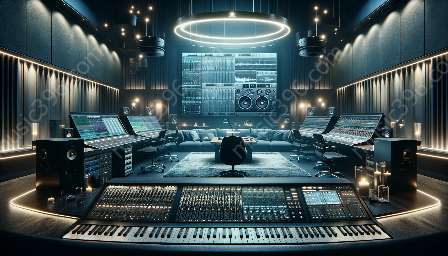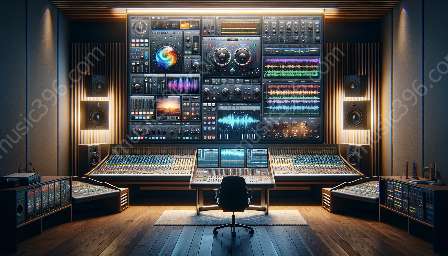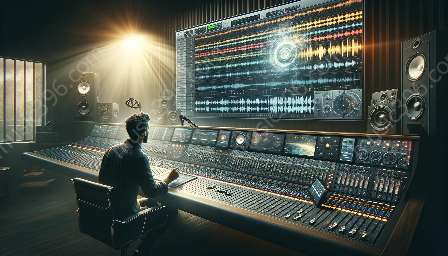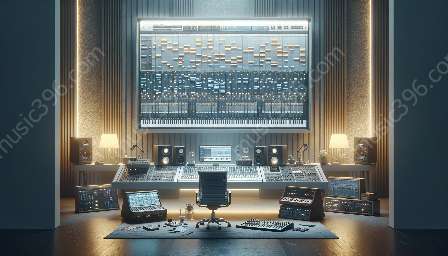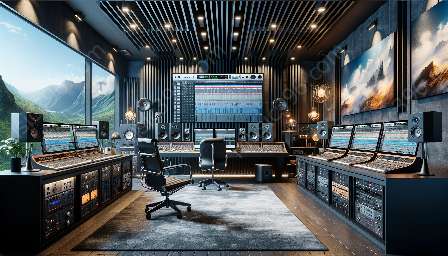Mixing in a digital audio workstation (DAW) involves the art of blending and balancing audio tracks to create a cohesive and polished sound. Understanding audio tracks and the functionalities of DAWs is crucial to effectively approach mixing within this environment.
Understanding Audio Tracks in a DAW
Before delving into mixing techniques, it's important to have a comprehensive understanding of audio tracks within a DAW. Audio tracks contain digital representations of recorded sounds, such as vocals, instruments, and other audio sources. In a DAW, audio tracks offer various controls and options for manipulating the sonic characteristics.
Some key aspects of audio tracks in a DAW include:
- Track Controls: Each audio track typically provides controls for volume, panning, and solo/mute functions. Understanding how to adjust these controls is essential for crafting a balanced mix.
- Signal Processing: DAWs offer a wide array of audio effects and signal processing tools that can be applied to individual audio tracks. These include equalization, compression, reverb, and more, allowing for detailed sonic shaping.
- Track Routing: DAWs allow for the routing of audio tracks to various buses and groups, facilitating organization and efficient processing of multiple tracks simultaneously.
Approaching Mixing in a DAW
When approaching mixing in a DAW environment, several key considerations and techniques can greatly enhance the quality of the final mix. Some of these approaches include:
1. Gain Staging and Levels
Proper gain staging ensures that the input levels of audio tracks are optimized to prevent distortion and maintain a healthy signal-to-noise ratio. By setting appropriate levels for individual tracks, a better foundation for the mix is established.
2. EQ and Frequency Balancing
Utilizing the EQ controls within a DAW allows for the shaping of each audio track's frequency content. Balancing the frequencies across different tracks is crucial for achieving clarity and avoiding frequency masking.
3. Dynamics Processing
Implementing compression, expansion, and other dynamic processing techniques helps control the dynamic range of audio tracks, ensuring consistent levels and enhancing the overall cohesiveness of the mix.
4. Spatial Processing
Creating a sense of space and dimension within the mix can be accomplished using reverb, delay, and spatial processing tools. These contribute to the depth and immersion of the audio environment.
5. Automation
Utilizing automation features in a DAW allows for precise adjustments of various parameters over time, such as volume, panning, and effect parameters. Automation adds dynamic movement and expression to the mix.
Utilizing DAW Features for Mixing
Modern DAWs offer a plethora of features and tools specifically designed for mixing purposes. Some of these features include:
- Mixer View: DAWs typically provide a dedicated mixer view, allowing for intuitive control of track levels, panning, and routing. This central hub is essential for monitoring and adjusting the mix.
- Plug-in Support: DAWs support a wide range of third-party plug-ins, including EQs, compressors, reverbs, and more, expanding the sonic possibilities for shaping the mix.
- Signal Routing: Understanding how signal routing works within a DAW enables efficient bussing, grouping, and parallel processing, facilitating complex mixing workflows.
- Visualization Tools: DAWs often provide visualization tools such as spectrum analyzers, waveform displays, and metering options, aiding in the analysis and optimization of audio tracks.
Conclusion
Approaching mixing in a DAW environment requires a combination of technical understanding and artistic sensibility. By comprehending the intricacies of audio tracks and the capabilities of DAWs, producers and engineers can create compelling and professional-quality mixes. Embracing the diverse tools and techniques available in a DAW empowers individuals to elevate their audio production skills and achieve exceptional sonic results.

